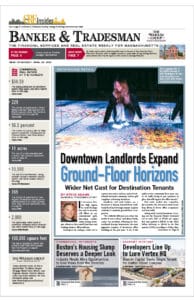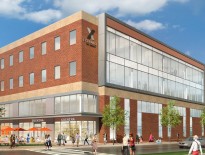The built environment is shaped by a city’s economics, culture and values. As these elements evolve, so must the built environment, creating a physical “strata” defining the periods of the city’s history.
In Boston in recent years, we have been fortunate to experience low unemployment, positive job growth and residents’ increasing desire to live downtown, which has allowed for the creation and absorption of more than 10,000 new units of housing and millions of square feet of new office, retail and lab buildings. In an era where new real estate is increasingly designed, engineered and traded as a commodity, we must consider what this period of growth will say about us.
The call for better design is being addressed by our civic leaders across the globe. Here in Boston, Mayor Marty Walsh has called for bolder, more exciting architecture. In London just this month, Mayor Sadiq Khan appointed 50 architects and designers to implement ambitious design standards for the city’s development projects.
At Transom, we think it’s time to answer that call. We believe that good design is not equated with spending more than your competitors or simply using the best materials. Instead, we believe that good design evokes appreciation for the care in which a project is curated. In fact, it was our shared respect for the process of designing a building that led us to bring on Howeler + Yoon, the Boston-based architecture and design firm, to lead the design for 212 Stuart St.
Early in the process, we identified that many of the new multifamily buildings delivered this cycle lack the relief and texture of the older buildings we value so much. Together, we sought to solve this by developing a dynamic building that provides relief in the building façade, delivering the depth and texture central to our design thesis. The result balances contextual with unconventional, all while delivering a beautiful, functional building.
But good design isn’t strictly about aesthetics − it’s also a critical value proposition. A distinct project can deliver value to investors through higher rents, quicker absorption, higher renewal rates and lower cap rates. Furthermore, a distinct design will help you perform in an increasing competitive market.
In Boston, 3,200 class A housing units were delivered in the three decades from 1980 thru 2009. In the last 4 years, over 5,000 class A housing units have come online downtown, with even more buildings in the pipeline. While these projects have performed well thus far, simply being new will not be enough in the future, and compelling design will be important to distinguish your project from the others in the market.
As Boston’s building boom continues, we owe it to our city to join the others across the United States and internationally that are embracing creativity and innovation in building design. Compelling design can, and should, raise the bar for developers, creating a ripple effect the city will benefit from, visually and economically.









